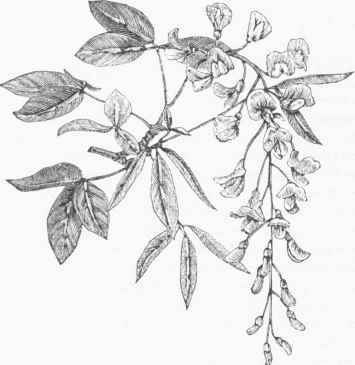Laburnum
Description
This section is from "The American Cyclopaedia", by George Ripley And Charles A. Dana. Also available from Amazon: The New American Cyclopędia. 16 volumes complete..
Laburnum
Laburnum, the ancient Latin name as well as the popular one for a small, hardy, deciduous tree of the family leguminosce. It was formerly placed in the genus cytisus, and is found in most works as C. laburnum; but some important characters separate it from cytisus, and it stands in recent works as laburnum vulgare. The common laburnum was introduced from Switzerland into Great Britain near the close of the 16th century, and is now largely cultivated as an ornamental tree. It has a smooth green bark, pale green three-foliolate leaves, and in May and June presents a beautiful appearance, every twig and small branch being hung with racemes of brilliant yellow flowers, which are long and pendulous, and suggested one of its common names, golden chain; in Europe it is also called bean trefoil. Its hard and heavy wood is largely used for ornamental work, and for handles to knives and other instruments; it takes a high polish, and has a greenish color; the French call it the ebony of the Alps. Rabbits are so fond of its bark, that they eat it in preference to that of any other tree.
The seeds are highly emetic, and may be regarded as poisonous, and their great profusion and brilliant appearance render it somewhat objectionable to cultivate the tree, from the danger of children or cattle being tempted to eat them. A hybrid (probably a graft hybrid) between this and a purple-flowered species obtained by a French horticulturist, M. Adam, is known as Adam's laburnum. Its flowers, which are of a dull purple color, frequently revert to one or the other parent; and the same branch, and even the same cluster, bears pure yellow and purple flowers of the parent species, as well as the dull purple ones of the hybrid. The alpine or Scotch laburnum (L. alpinum) attains a greater size than the one already described; it is a native of southern Europe, and cultivated forms of the two are so much alike that it is probable they are not specifically distinct.

Laburnum.
Continue to:


